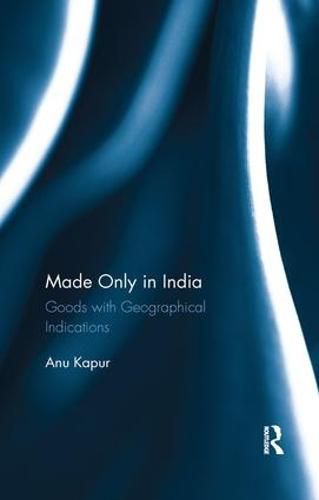Readings Newsletter
Become a Readings Member to make your shopping experience even easier.
Sign in or sign up for free!
You’re not far away from qualifying for FREE standard shipping within Australia
You’ve qualified for FREE standard shipping within Australia
The cart is loading…






What makes Darjeeling tea, Pashmina shawl, Monsooned Malabar Arabica coffee and Chanderi saree special? Why is it that some goods derive their uniqueness through their inherent linkage to a place? In a pioneering study, this book explores this intriguing question in the Indian context across 199 registered goods with geographical indications, linked with their place of origin. It argues that the origin of these goods is attributed to a distinctive ecology that brews in a particular place. The attributes of their origin further endorse their unique geographical indications through legal channels.
Drawing from a variety of disciplines including geography, history, sociology, handicrafts, paintings, and textiles, the author also examines the Geographical Indications Act of 1999, and shows how it has created a scope to identify, register and protect those goods, be they natural, agricultural, or manufactured. The work presents a new perspective on the indigenous diversities and offers an original understanding of the geography and history of India.
Lucid and accessible, with several illustrative maps, this book will be useful to scholars and researchers in the social sciences, environmental studies, development studies, law, trade and history.
$9.00 standard shipping within Australia
FREE standard shipping within Australia for orders over $100.00
Express & International shipping calculated at checkout
What makes Darjeeling tea, Pashmina shawl, Monsooned Malabar Arabica coffee and Chanderi saree special? Why is it that some goods derive their uniqueness through their inherent linkage to a place? In a pioneering study, this book explores this intriguing question in the Indian context across 199 registered goods with geographical indications, linked with their place of origin. It argues that the origin of these goods is attributed to a distinctive ecology that brews in a particular place. The attributes of their origin further endorse their unique geographical indications through legal channels.
Drawing from a variety of disciplines including geography, history, sociology, handicrafts, paintings, and textiles, the author also examines the Geographical Indications Act of 1999, and shows how it has created a scope to identify, register and protect those goods, be they natural, agricultural, or manufactured. The work presents a new perspective on the indigenous diversities and offers an original understanding of the geography and history of India.
Lucid and accessible, with several illustrative maps, this book will be useful to scholars and researchers in the social sciences, environmental studies, development studies, law, trade and history.